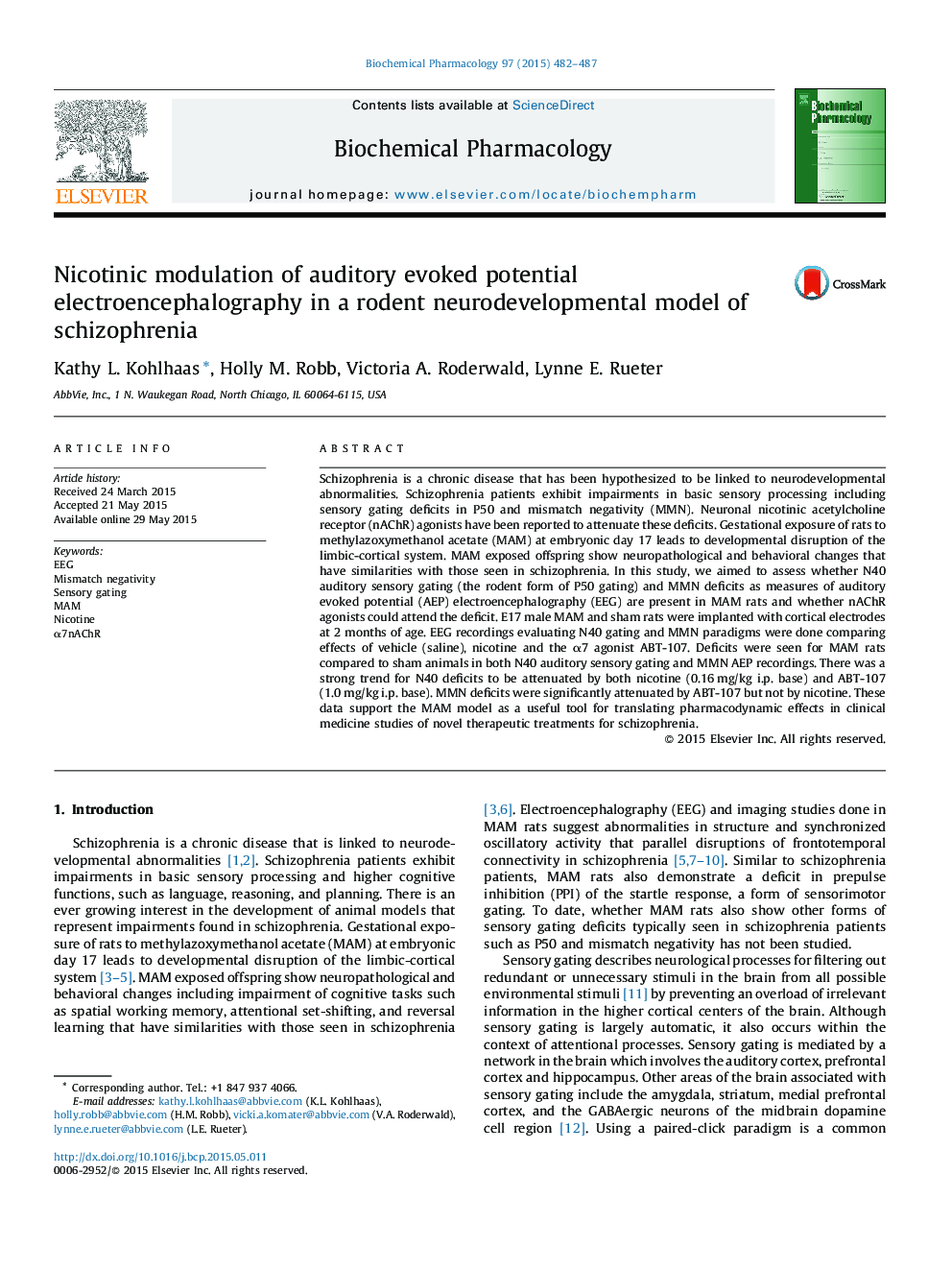| Article ID | Journal | Published Year | Pages | File Type |
|---|---|---|---|---|
| 2512001 | Biochemical Pharmacology | 2015 | 6 Pages |
Schizophrenia is a chronic disease that has been hypothesized to be linked to neurodevelopmental abnormalities. Schizophrenia patients exhibit impairments in basic sensory processing including sensory gating deficits in P50 and mismatch negativity (MMN). Neuronal nicotinic acetylcholine receptor (nAChR) agonists have been reported to attenuate these deficits. Gestational exposure of rats to methylazoxymethanol acetate (MAM) at embryonic day 17 leads to developmental disruption of the limbic-cortical system. MAM exposed offspring show neuropathological and behavioral changes that have similarities with those seen in schizophrenia. In this study, we aimed to assess whether N40 auditory sensory gating (the rodent form of P50 gating) and MMN deficits as measures of auditory evoked potential (AEP) electroencephalography (EEG) are present in MAM rats and whether nAChR agonists could attend the deficit. E17 male MAM and sham rats were implanted with cortical electrodes at 2 months of age. EEG recordings evaluating N40 gating and MMN paradigms were done comparing effects of vehicle (saline), nicotine and the α7 agonist ABT-107. Deficits were seen for MAM rats compared to sham animals in both N40 auditory sensory gating and MMN AEP recordings. There was a strong trend for N40 deficits to be attenuated by both nicotine (0.16 mg/kg i.p. base) and ABT-107 (1.0 mg/kg i.p. base). MMN deficits were significantly attenuated by ABT-107 but not by nicotine. These data support the MAM model as a useful tool for translating pharmacodynamic effects in clinical medicine studies of novel therapeutic treatments for schizophrenia.
Graphical abstractFigure optionsDownload full-size imageDownload as PowerPoint slide
